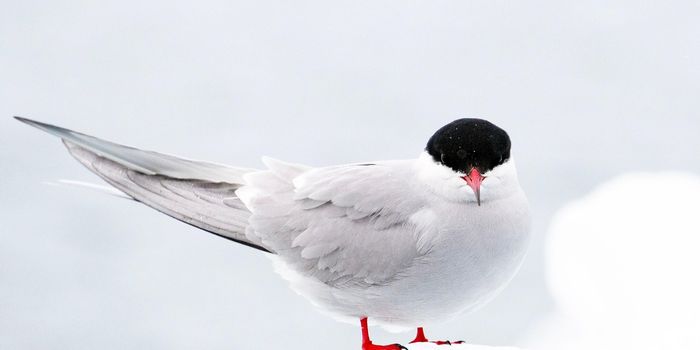
When zoologist Ivan Sazima went for a walk in the park in southeastern Brazil on a warm September day in 2013, he was hoping to find noteworthy animal behavior to study.
But he did not expect to witness lizard necrophilia. Right in front of him, he saw a male reptile trying to court and mate with a dead female of the same species, Salvator merianae, commonly known as the black-and-white tegu.
"I felt a sense of wonder, because I did not observe this behavior in lizards before, only in frogs," said Sazima, of the Zoology Museum of the University of Campinas in São Paulo.
Necrophilia occurs in other lizard species, but it's the first documented instance in black-and-white tegus, one of the most common lizards in South America.
Sazima watched the male lizard flick his tongue at the deceased female-a common courtship behavior-and try to mate with her for about five minutes. Then a group of geese showed up, causing the confused suitor to flee. (See "Wild Romance: Weird Animal Courtship and Mating Rituals.")
The scientist returned to the same spot the next afternoon. By that time, the corpse was bloated and had begun to rot and smell.
But even the stench did not discourage another male black-and-white tegu from attempting to have sex with the dead body-this time for nearly an hour.
During this time, the new male embraced the dead female and bit her head, another courtship behavior. He rested on her body from time to time, taking breaks from the exhausting sexual activity, before finally flicking his tongue on the corpse and leaving, according to the study, published in January in the journal Herpetology Notes.
Corpse Brides
Sazima's encounter adds to several reported instances of necrophilia in the animal world.
Henrique Caldeira Costa of the Federal University of Minas Gerais, in Belo Horizonte, Brazil, reported necrophilia in male green ameiva lizards in Brazil in 2010. The female had likely been hit by a vehicle on the road, he wrote in the journal Herpetology Notes. (See more weird reptile reproduction: "World's Longest Snake Has Virgin Birth-First Recorded in Species.")
In another incident, Kamelia Algiers, a biologist at Ventura College in California, described a necrophiliac long-nosed leopard lizard in Nevada, in the western United States.
The animal attempted to copulate with a roadkill female, whose "intestines were sticking out, and there were ants crawling all over it," said Algiers, who described the event in 2005 in Herpetological Review.
What's more, mating with the dead isn't restricted to reptiles and amphibians: Ducks, penguins, sea lions, pigeons, and even ground squirrels have also been caught in the grisly act.
Why Mate With the Dead?
So, what exactly draws some male lizards to female corpses? Despite many scientific observations, "necrophilia in lizards is still poorly understood," said Costa, who wasn't involved in the new tegu research.
But as for those amorous black-and-white tegus, the Zoology Museum's Sazima has a theory: The males may have been simply fooled into thinking the female was alive.
For one, the dead female lizard was still warm: Though dead, her body temperature was probably close to that of the ambient air. And her pheromones, likely still detectable on her body after death, may have allured the male admirers. (See "Why Some Animals Mate Themselves to Death.")
Federal University's Costa agrees this is a valid theory, and suspects that the female's high body temperature and pheromones might have explained the lizard necrophiliac he described in 2010.
Interestingly, necrophilia seems to be beneficial for at least one species: a small frog in Amazonian Brazil called Rhinella proboscidea.
A 2013 study showed that R. proboscidea males can extract eggs from dead sexual partners and fertilize them, a process called "functional necrophilia."
Now that's what you call the living dead.
(Source National Geographic)
 When zoologist Ivan Sazima went for a walk in the park in southeastern Brazil on a warm September day in 2013, he was hoping to find noteworthy animal behavior to study.
When zoologist Ivan Sazima went for a walk in the park in southeastern Brazil on a warm September day in 2013, he was hoping to find noteworthy animal behavior to study.







